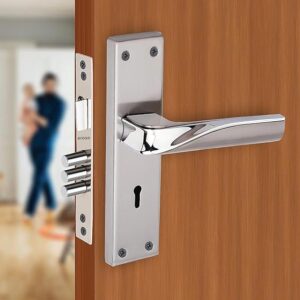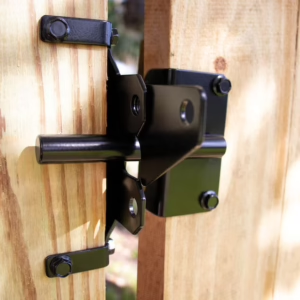When we lock or liberate a door, it feels superficial. Turn the important thing, and the door is secure. But at the back of that simple movement is a collection of small components running together to secure our houses. Understanding these elements lets you make smart choices when shopping for or solving a lock. Let’s explore the principal aspects of a door lock mechanism and how they paint collectively!
Different types of Parts of a Door Lock
The Key
The key is the part of the lock you spot and use the most. It’s notably reduced to fit your lock, and it’s no different. When you insert the key, it moves the inner components so you can open or lock the door. Without an appropriate key, the lock doesn’t flip.

Cylinder or Lock Body
The lock frame, also known as the lock frame, is the lock cylinder component wherein you insert the key. It houses the keyhole and the mechanism that interacts with the important thing. Inside the cylinder are pins, which are derived. These parts paintings collectively to “understand” the proper key. When the appropriate secret is inserted, it aligns the pins so the cylinder can flip and unlock the door.
The Bolt (or Latch)
The bolt, often called the latch, is the element that sincerely locks the door. It slides in and out of the doorframe to make the door. When you turn the important thing or the handle, the bolt moves, locking or unlocking the door. There are two commonplace forms of bolts:
Deadbolts are strong and pass more profoundly into the doorframe, making them more at ease.
Spring latches are more accessible to perform but aren’t as secure as deadbolts.
Strike Plate
The strike plate is a metal plate attached to the doorframe. It has a hole where the bolt fits while the door is closed and locked. The strike plate ensures the bolt fits securely, preventing the door from establishing. It additionally protects the doorframe from harm caused by the bolt.
Thumb Turn
Some locks have a thumb turn and a small lever on the interior of the door. This lets you lock or unencumber the door from the interior without a key. Thumb turns are expected in deadbolts for homes, as they add convenience and shorten residents’ right of entry.
Spindle
The spindle is a rod that connects the door cope with or knob to the latch mechanism in the door. When you switch the cope, the spindle rotates, transferring the latch to open or close the door. The spindle plays a crucial role in making sure the handle works smoothly.
Housing
The housing is the outer case that holds all the lock’s elements together. It helps and protects the internal mechanisms. A sturdy housing provides sturdiness and makes the lock more comfortable.
Pins and Springs
Inside the cylinder are pins and comes. These tiny elements are critical for the lock to work with a particular key. Each lock has a unique association of pins. Inserting the right key lifts the pins to a specific top, letting the cylinder turn. Springs practice pressure, maintaining the pins in the area while the lock is idle.
Actuator
The actuator is a small device that connects the cylinder to the bolt. When you turn the key, the actuator activates the bolt, locking or unlocking the door. It’s like the bridge that transfers the key’s movement to the lock mechanism.
The Handle or Knob
While now not technically a keyed door lock parts of the lock, the manager or knob is what you use to open the door. It’s related to the spindle and works intently with the lock mechanism. Some handles and knobs consist of locks, while others work with a separate deadbolt.
The Escutcheon Plate
The escutcheon plate is an ornamental cowl surrounding the keyhole or door handle. Its primary role is to defend the lock mechanism from dust and debris, but it also provides a stylish touch to the door.

Which is the best and most trusted place for door lock components?
Junying Metal Manufacturing Co. is a fantastic choice for the best door lock replacement parts. Located in China, Junying Metal is a mainstay within the mechanical security discipline. With many years of experience, they specialize in making durable lock additives that meet high requirements.
Junying offers various door latch and bolts suitable for all doorways. Each element is crafted with care, ensuring strength and reliability. Whether you need home, workplace, or business components, Junying’s merchandise is trusted worldwide for its high quality.
Choosing the Junying Metal method means investing in protection and quality. They recognize the importance of relaxed locks and work hard to deliver the best components.
Why Is It Important to Know These Parts?
Knowing the door handle assembly can help you pick the right lock for your needs. For instance, if security is your priority, you could need a lock with a sturdy deadbolt and durable housing. If you’ve got a problem with specific deadbolt lock parts of your lock, knowing these elements can help you explain the situation to a locksmith or maybe restore minor troubles yourself.
FAQs
What is the purpose of the cylinder in a lock?
The cylinder holds the keyhole and the pins that understand the correct key. When you insert the right key, the pins align, letting the cylinder flip and unlock the door.
What’s the difference between a deadbolt and a spring latch?
A deadbolt is more robust and gives higher security as it goes deeper into the doorframe. A spring latch is less complicated to function but much less secure.
Why is a strike plate vital?
The strike plate strengthens the doorframe and ensures the bolt suits securely, retaining the door closed and preventing compelled entry.
In Wrap Up the Content
Each part of a door lock is vital in keeping you secure. From the simple key to the complicated actuator, each piece works together for protection and comfort. Now that you know more about those elements, you can make informed decisions about the locks in your house. Whether you’re fixing a problem or deciding on a brand new lock, knowing those elements facilitates keeping your home at ease.
